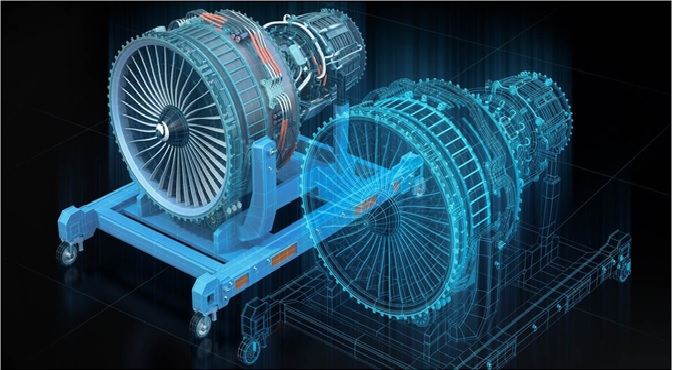Robotic Process Automation (RPA)
Robotic Process Automation (RPA) is a technology that uses software robots to automate repetitive and mundane tasks in order to improve efficiency, productivity, and accuracy. RPA can be applied to a wide range of business processes, such as data entry, invoice processing, customer service, and HR tasks.
RPA robots are designed to mimic human actions by interacting with software applications and systems, such as web browsers, email clients, and databases, to perform tasks that would typically be done by a human worker. RPA robots can work 24/7, without the need for breaks or downtime, and can process large volumes of data quickly and accurately.

Figure 1. RPA
Figure 1 is an illustration of RPA
How does RPA work?
According to Forrester, RPA software tools must include the following core capabilities:
- Low-code capabilities to build automation scripts
- Integration with enterprise applications
- Orchestration and administration including configuration, monitoring and security
Automation technology, like RPA, can also access information through legacy systems, integrating well with other applications through front-end integrations. This allows the automation platform to behave similarly to a human worker, performing routine tasks, such as logging in and copying and pasting from one system to another. While back-end connections to databases and enterprise web services also assist in automation, RPA’s real value is in its quick and simple front-end integrations. [1]
Some Benefits of RPA
- Productivity: Compared with humans, software robots can complete the same tasks about five times faster. They also work 24/7. Work will be getting done more quickly, which creates capacity for more work to get done. Higher productivity can reduce expenses as well as create room for more rapid growth. [2]
- Accuracy: Robots are 100 percent accurate, 100 percent consistent, and 100 percent compliant with policies. The more work you turn over to robots, the fewer clerical errors you experience, and the more time you save that used to be spent correcting those errors. Eliminating the little mistakes humans make can have an enormous culminative impact on your cost base and customer satisfaction levels. [2]
- Cost savings: By automating tasks, businesses can reduce the need for human workers and save on labor costs.
- Faster processing times: RPA robots can process data and complete tasks much faster than human workers, resulting in faster turnaround times and improved customer service.
Some Disadvantages of RPA
- Potential Job Losses: If a robot can work faster with a more consistent rate, then it is assumed that there will be no need for human input. It is the main concern for the employees, and this results as a major threat to the labour market. However, this thinking is not accurate. Amazon has shown a great example of this limitation. The employment rate has grown rapidly during a period where they have increased the number of robots from 1000 to over 45000. [3]
- Initial Investment Costs: RPA is still in the stage of innovation, and so it can present challenges that may result in unwanted outcomes. Therefore, it isn't easy for organizations to decide whether they should invest in robotic automation or wait until its expansion. A comprehensive business case must be developed when considering the implementation of this technology; otherwise, it will be useless if returns are only marginal, which may not worth taking the risk. [3]
- Hiring Skilled Staff: Many organizations believe that to work with RPA, the staff must have significant technical knowledge of automation as robots may require programming skills and an awareness of how to operate them. It further forces organizations to either hire a skilled staff or train existing employees to expand their skills. [3]
Overall, RPA technology has the potential to revolutionize the way businesses operate, by automating routine tasks and freeing up human workers to focus on more strategic and creative work.
References:
- https://www.ibm.com/in-en/topics/rpa
- https://www.nicerpa.com/rpa-guide/the-benefits-of-rpa/
- https://www.javatpoint.com/advantages-and-disadvantages-of-rpa
Cite this article:
Hana M (2023), Robotic Process Automation (RPA), AnaTechMaz, pp.211
















